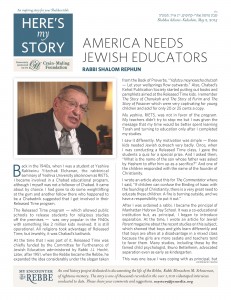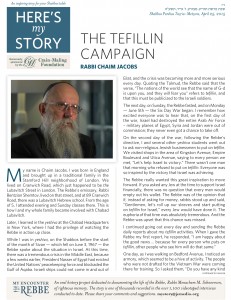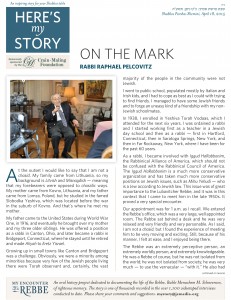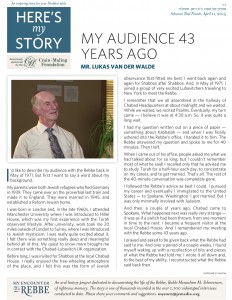HMS: America needs Jewish Educators
Back in the 1940s, when I was a student at Yeshiva Rabbeinu Yitzchak Elchanan, the rabbinical seminary of Yeshiva University also known as RIETS, I became involved in a Chabad educational program, although I myself was not a follower of Chabad. It came about by chance. I had gone to do some weightlifting at the gym and another fellow there who happened to be a Chabadnik suggested that I get involved in their Released Time program.
The Released Time program – which allowed public schools to release students for religious studies off the premises – was very popular in the 1940s with something like 2 million kids involved. It is still operational. All religions took advantage of Released Time, but Jewishly, it was Chabad’s bailiwick.
At the time that I was part of it, Released Time was chiefly funded by the Committee for Furtherance of Jewish Education administered by Rabbi J.J. Hecht. Later, after 1951, when the Rebbe became the Rebbe, he expanded the idea considerably under the slogan taken from the Book of Proverbs, “Yafutzu maynosecha chutzah – Let your wellsprings flow outwards.” Also, Chabad’s Kehot Publication Society started putting out books and pamphlets aimed at the Released Time kids. I remember The Story of Chanukah and The Story of Purim and The Story of Passover which were very captivating for young children and sold for only 20 or 25 cents a copy.
My yeshiva, RIETS, was not in favor of the program. My teachers didn’t try to stop me but I was given the message that my time would be better spent learning Torah and turning to education only after I completed my studies.
I saw it differently. My motivation was simple – these kids needed Jewish outreach very badly. Once, when I was conducting a Released Time class, I gave the students a quiz for a special prize. And I asked them, “What is the name of the son whose father was asked by Hashem to offer him up as a sacrifice?” And one of the children responded with the name of the founder of Christianity. (more…)








